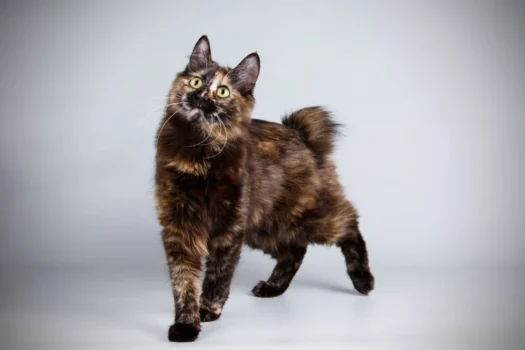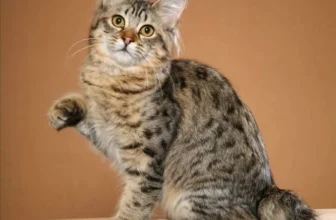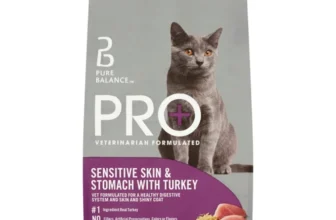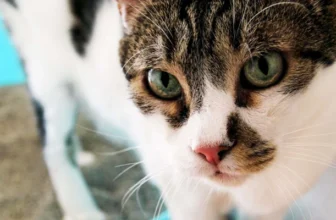It’s a common misconception that obesity is only a problem for humans. However, American Bobtail Cats can also become overweight, which can lead to a range of health issues. As a cat owner, it’s important to understand the causes and risks of obesity in American Bobtail Cats, as well as how to determine your cat’s ideal weight and nutritional needs. By following dietary recommendations and creating a weight loss plan for your feline friend, you can help them achieve a healthier weight and live a longer, happier life. In this article, we’ll dive into these topics and explore the best ways to reduce obesity in American Bobtail Cats.
Understanding Obesity in American Bobtail Cats
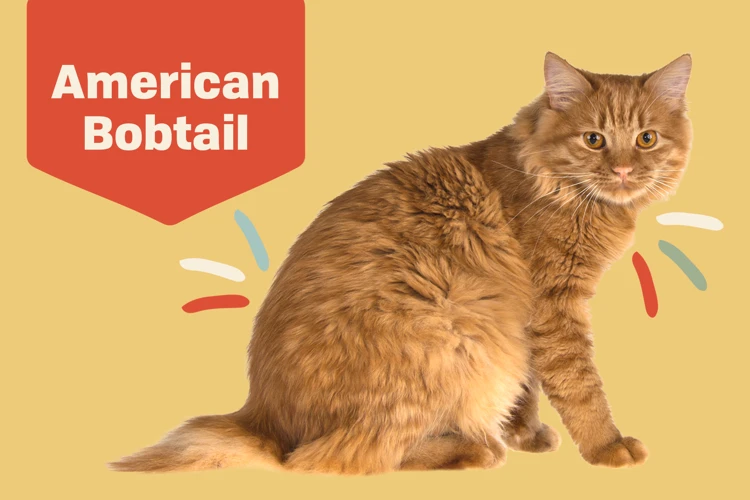
Obesity is a common health issue among domestic animals, and American Bobtail cats are no exception. Excessive weight can cause various health problems in cats, including joint pain, diabetes, and heart disease. Hence, it’s crucial to understand the causes and risks associated with obesity in American Bobtail cats to prevent and manage this health condition effectively. In the following sections, we will explore the causes and risks of obesity in American Bobtail cats in greater detail. Understanding these aspects will help you make informed decisions about your cat’s health and well-being. If you want to learn more about preventing obesity in American Bobtail cats, you can check out our article on preventing obesity in American Bobtail cats.
Causes of Obesity in American Bobtail Cats
Obesity in American Bobtail cats is a growing concern among pet owners. There are many causes of obesity in these cats, including but not limited to overeating, lack of exercise, and genetics. Some other potential causes include feeding them human food and treats, lack of portion control, and not providing enough exercise opportunities. Additionally, it is important to note that some medications and health conditions can contribute to weight gain in cats.
Overeating is a major cause of obesity in American Bobtail cats. These cats may overeat due to their natural instincts to hunt and gather food, or they may overeat because they enjoy the taste of their food. If pet owners are not careful about regulating their portion sizes or feeding them too much, cats can quickly gain weight. In such cases, the cats consume more calories than they need, and those extra calories are stored as fat.
Genetics also play a role in obesity in American Bobtail cats. Some cats have a genetic predisposition to obesity, which means they may have slower metabolism rates and have difficulty burning off excess calories. Additionally, certain breeds, such as the American Bobtail, may be more prone to obesity than others.
Lack of exercise is another significant cause of obesity in American Bobtail cats. Cats that are not provided with ample opportunities for exercise and playtime will not be as active, which can lead to them gaining weight. Some fun ways for pet owners to increase their cat’s activity include using interactive toys, climbing apparatus, and scratching posts.
Understanding the causes of obesity in American Bobtail cats can help pet owners take preventive measures to protect their beloved pets’ health. Regular veterinary check-ups can help pet owners monitor their cat’s weight and identify any health risks associated with obesity. By making adjustments to their cat’s diet and exercise routine, pet owners can help their cat lose weight and live a healthier life. It is essential to keep in mind that obesity in American Bobtail cats could lead to several health problems, and preventive measures can significantly reduce the risk of these complications.
Risks of Obesity in American Bobtail Cats
Obesity in American Bobtail Cats can lead to a number of serious health risks. It is not just excess weight, but the fat that accumulates in their bodies that can cause health problems. Obese cats are at increased risk of developing health problems such as diabetes, arthritis, heart disease, and respiratory issues. They also have a higher risk of developing liver disease, which can be fatal.
Diabetes: Obese American Bobtail Cats are at two times greater risk of developing diabetes compared to cats that maintain a healthy weight. Diabetes is a serious disease that can affect your cat’s metabolism, ability to produce insulin, and kidney function. Once your cat develops diabetes, it requires lifelong treatment, and a careful diet must be followed.
Heart Disease: The extra weight carried by obese American Bobtail Cats puts a strain on their heart, increasing the risk of cardiovascular disease. This, in turn, can lead to high blood pressure and heart attacks. Obese cats are also more likely to develop respiratory issues.
Arthritis: Obese American Bobtail Cats are more likely to develop joint problems and are at a higher risk of developing arthritis. Carrying excess weight puts strain on joints, which can cause painful inflammation and even damage.
Liver Disease: An obese American Bobtail Cat may develop hepatic lipidosis, or fatty liver disease. This is a serious illness that happens when a cat’s body is forced to mobilize stored fat into the liver to use as energy. The liver becomes overwhelmed, and the cat’s health can quickly deteriorate.
To avoid these health risks, it is important to take steps to maintain your American Bobtail Cat’s weight at a healthy level. Regular exercise and feeding your cat a healthy diet are key factors. Also, be sure to schedule regular vet checkups to monitor your cat’s weight, and look for signs of obesity, such as difficulty walking and grooming. By taking care of your American Bobtail Cat’s weight, you can help ensure a long and healthy life for your furry friend. For more information about obesity in American Bobtail Cats, visit /obesity-in-american-bobtail-cats/.
Determining Your Cat’s Ideal Weight and Nutritional Needs
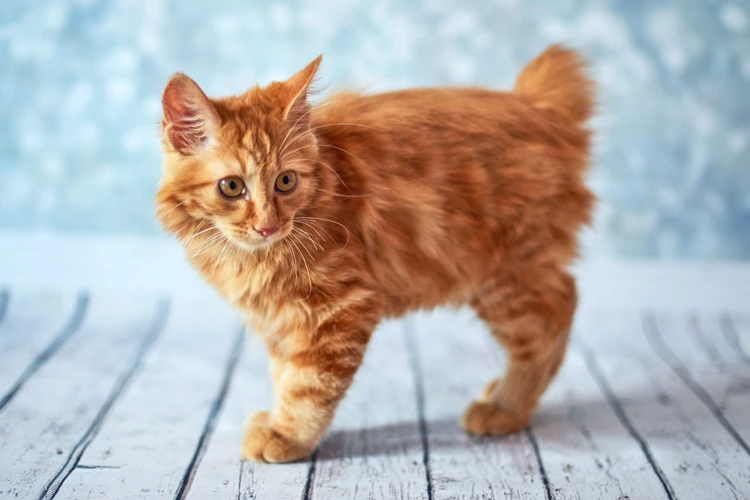
Determining the ideal weight and nutritional needs of your American Bobtail cat is crucial in the fight against obesity. Identifying the right weight for your cat can be a perplexing task, but it is an essential part of ensuring your cat’s good health. Obesity is a serious problem for American Bobtail cats, and it can lead to various health risks such as diabetes, arthritis, and cardiovascular diseases. It is vital to know how to determine the ideal weight of your cat and how to provide them with the appropriate dietary requirements to keep them healthy and happy. In the following sections, we will explore some tips for calculating the ideal weight and nutritional needs of your American Bobtail cat to promote a happier, healthier lifestyle. To learn more about the risks of obesity in American Bobtail cats, head to /health-risks-obesity-american-bobtails/.
How to Determine Ideal Weight
Determining your American Bobtail cat’s ideal weight is crucial to its overall health and well-being. To do this, you can follow a few simple steps:
- Weigh your cat: The first step in determining your cat’s ideal weight is to get an accurate measurement of its current weight. You can do this by weighing your cat on a scale at home or at the vet’s office.
- Assess body condition: Once you have your cat’s weight, you’ll want to assess its body condition. This can be done by looking at and feeling your cat’s body. You want to look for a visible waistline and be able to feel your cat’s ribs without excess fat covering them. Your cat’s belly should also be tucked up and not hanging down.
- Consult with your vet: If you’re having trouble assessing your cat’s body condition or determining its ideal weight, don’t hesitate to consult with your vet. They can use tools such as body condition score charts to help you get an accurate measurement. They can also help you develop a weight loss plan if your cat is overweight or obese.
It’s important to note that obesity in American Bobtail cats can lead to serious health issues and even shorten their lifespan. Regular vet checkups are an essential part of managing your cat’s weight and ensuring its overall health. For more information on signs of obesity in American Bobtail cats and tips for incorporating exercise into their daily routine, check out our articles on obesity in American Bobtail cats and exercise tips for overweight Bobtail cats.
Understanding Nutritional Needs
To provide your American Bobtail Cat with a balanced and nutritious diet, it’s essential to understand their specific nutritional needs. A healthy diet should provide all the essential nutrients like protein, carbohydrates, healthy fats, vitamins, and minerals in the right amount to prevent obesity.
Protein is a crucial nutrient for American Bobtail Cats, and it should make up the majority of their diet. It helps in maintaining healthy muscle mass and tissues, and it also provides energy. Make sure the cat food you choose meets the protein requirements of your cat, typically around 35% to 45% of calories.
Carbohydrates are another essential nutrient for your cat, but they should come from whole food sources like vegetables and fruits. Avoid feeding your cat foods that contain grains, as they can be difficult to digest and contribute to weight gain.
Fats are also a critical part of your American Bobtail’s diet but remember, not all fats are created equal. Good fats like those found in fish, flaxseed, and canola oil provide valuable nutrients while bad fats can lead to obesity and other health issues. Be careful while feeding fatty foods to your cat, as they need only a certain amount of fat in their diet.
Vitamins and minerals should also be a part of your cat’s diet. A balanced diet containing all necessary nutrients can provide adequate amounts of vitamins and minerals. However, some cats may need additional supplements if they do not get enough from their food.
It’s essential to check the ingredients list on your cat’s food before purchase to ensure that your cat is receiving a high-quality diet. Talk to your veterinarian about your cat’s particular nutritional needs, depending on their activity level, age, and any underlying health concerns they may have. Regular vet checkups and monitoring your cat’s weight can also help diagnose obesity early on. In case of any concerns, consult with your veterinarian immediately.
Remember, a nutrient-dense and balanced diet, along with regular exercise, is crucial in keeping your American Bobtail Cat at a healthy weight and preventing obesity.
Dietary Recommendations for Reducing Obesity in American Bobtail Cats
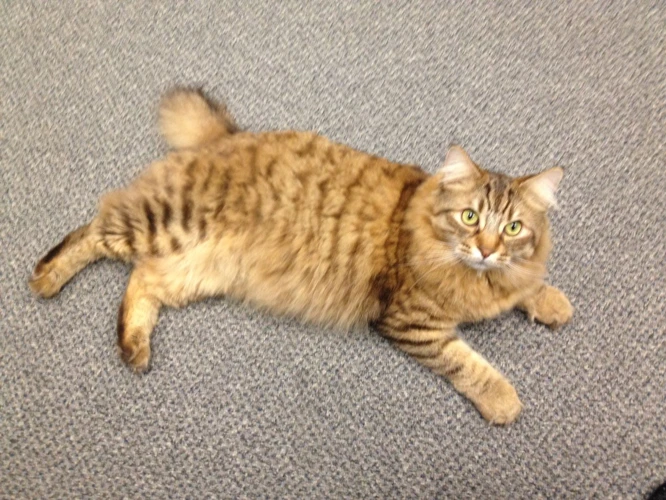
As mentioned earlier, obesity in American Bobtail Cats is a serious issue that requires immediate attention. One of the most effective ways to reduce obesity in cats is by making changes to their diet. However, it’s important to remember that a sudden change in diet can be harmful to your cat’s health. It’s crucial to consult with a veterinarian or a certified animal nutritionist to develop a healthy weight loss plan that suits your cat’s nutritional needs. In this section, we’ll provide you with some dietary recommendations that are essential for reducing obesity in American Bobtail Cats. These recommendations include low-calorie and high-protein cat food, frequent small meals, avoiding human food and treats, and incorporating exercise and playtime into your cat’s daily routine.
Low-Calorie and High-Protein Cat Food
One of the key steps in helping your American Bobtail cat lose weight is to switch to a low-calorie and high-protein diet. High-quality cat food that is lower in calories and higher in protein will help your cat achieve a healthy weight while still providing the necessary nutrition. When selecting cat food, check the ingredients list and ensure that the first few ingredients are a protein source. Avoid foods with high levels of carbohydrates, as these can contribute to weight gain.
Here are some low-calorie and high-protein cat foods to consider:
- Blue Buffalo Healthy Gourmet Adult Pate Chicken Cat Food
- Wellness CORE Grain-Free Chicken, Turkey, and Chicken Liver Cat Food
- Nature’s Variety Instinct Ultimate Protein Grain-Free Cage-Free Chicken Recipe Cat Food
- Earthborn Holistic Chicken Catcciatori Grain-Free Canned Cat Food
When transitioning to a new diet, do so gradually over the course of a week or so to avoid stomach upset or digestive issues. Be sure to consult with your veterinarian before making any dietary changes, as they can help recommend the best food for your cat’s needs.
Remember, feeding your cat a high-protein, low-calorie diet is only one part of an overall weight loss plan. To see results, it’s important to limit portion sizes and ensure your cat is getting enough exercise. For more information on identifying signs of obesity in American Bobtail cats, check out our previous article.
Frequent Small Meals
Dividing your American Bobtail cat’s meals into frequent small portions throughout the day can help reduce obesity. This feeding method can increase your cat’s metabolism and energy level, which in turn helps them burn calories more efficiently. It can also prevent overeating since the cat’s stomach will feel fuller for longer periods throughout the day.
Here are some tips to follow when using frequent small meals to reduce your cat’s obesity:
| Tips | Explanation |
|---|---|
| Split the daily food servings into small portions | Divide the recommended daily food intake into smaller portions that can be fed 3-4 times throughout the day. |
| Use smaller bowls or plates | Smaller bowls or plates can help you offer smaller food servings, which can make your cat feel fuller even with fewer calories. |
| Stick to a consistent feeding schedule | Your cat’s body will adjust to a regular feeding schedule, and this will help them avoid overeating since they know when to expect their next meal. |
It’s also important to ensure that the total amount of food you’re giving your cat is appropriate for their weight loss goals. Consult your veterinarian to determine the exact amount of food your cat needs to consume daily. By incorporating frequent small meals into your cat’s dietary plan, you can help them achieve their weight loss goals and live a happier, healthier life.
Avoiding Human Food and Treats
While it may be tempting to share some of your favorite human foods with your American Bobtail cat, it is important to remember that many human foods are not suitable for feline consumption. In fact, some human foods can be toxic to cats and can lead to health problems such as obesity. That’s why it’s essential to avoid giving your cat human food and treats.
Common Human Foods to Avoid Feeding Your American Bobtail Cat
| Food | Risk |
|---|---|
| Chocolate | Contains caffeine and theobromine, which can cause vomiting, diarrhea, seizures, and even death |
| Onions and Garlic | Can cause anemia in cats |
| Raw Meat and Eggs | Can contain harmful bacteria such as E. Coli and Salmonella |
| Dairy Products | Many cats are lactose intolerant and can experience digestive upset if consumed |
| Bones | Pose a risk of choking or causing internal damage to the digestive tract |
While some human foods may be safe in small quantities, it’s always best to err on the side of caution and stick to feeding your cat a well-balanced diet of high-quality cat food that meets their nutritional needs. Treats marketed as specifically formulated for cats can be a good option, as long as they are given in moderation and do not make up a significant portion of your cat’s diet.
Remember, it’s not always easy to resist those pleading eyes and persistent meows, but feeding your American Bobtail cat human food and treats can lead to unwanted weight gain and even serious health problems. Instead, opt for healthy and nutritious cat food and treats designed specifically for feline consumption.
Incorporating Exercise and Playtime into Your Cat’s Daily Routine
Maintaining a regular exercise routine is a crucial aspect of reducing obesity in American Bobtail cats. Obesity can make it harder for cats to move around and play, exacerbating the problem even further. In this section, we will discuss how to incorporate exercise and playtime into your cat’s daily routine.
One way to help your cat get more exercise is by providing opportunities for active play. A great way to do this is to dedicate a specific time each day for playtime. You can use interactive toys such as feather wands, laser pointers, or catnip stuffed toys to keep your cat engaged. Additionally, you can hide treats around the house and encourage your cat to find them, which will get them moving and mentally stimulated.
Another way to incorporate exercise into your cat’s daily routine is by providing them with vertical space to climb and explore. A cat tree or tower can provide your cat with an engaging environment to play, exercise and mentally stimulate themselves. Vertical space not only helps cats exercise but can also prevent any territorial issues, especially in multi-cat households.
Regular exercise will help your cat maintain and build their muscle mass while also improving their cardiovascular health. It will also improve their overall mood and behavior.
It’s also important to keep in mind that cats are natural hunters and need to engage in activities that satisfy their predatory instincts. You can incorporate this into their exercise routine by providing puzzle feeders or hiding their food around the house. This will encourage your cat to work for their food and stimulate their hunting behaviors.
Lastly, it’s essential to create an exercise routine that your cat enjoys. If your cat doesn’t like to play with toys or climb a cat tree, try to find other activities that they enjoy. Whether it’s chasing a ball or running up and down the stairs, the goal is to find a way to help your cat stay active.
Here is a table summarizing some ways to incorporate exercise and playtime into your cat’s daily routine:
| Activity | Description | Benefits |
|---|---|---|
| Dedicate playtime each day | Using interactive toys such as feather wands or laser pointers, or hiding treats around the house | Engages both mentally and physically, improves mood and behavior |
| Vertical space | Cat trees or towers can provide a stimulating environment for your cat to play and exercise | Helps to prevent territorial issues, improves mood and behavior |
| Puzzle feeders | Encourage your cat to work for their food and stimulate their hunting behaviors | Helps to engage mentally and physically, improves hunting behavior |
| Find activities your cat enjoys | Whether it’s chasing a ball or running up and down the stairs, customize their exercise routine to their preferences | Makes exercise more enjoyable for your cat |
Incorporating daily exercise and playtime into your cat’s routine is crucial for their overall health and well-being. Creating a routine that they enjoy will make it easier for both you and your cat, and will ultimately lead to a happier and healthier feline companion.
Creating a Weight Loss Plan for Your American Bobtail Cat
As a loving cat owner, it is your responsibility to ensure your American Bobtail cat is healthy and happy. If your cat is struggling with obesity, it’s crucial to create a weight loss plan tailored to meet their specific needs. However, creating a weight loss plan for your cat can be perplexing, especially if you’re unsure of where to start. In this section of the article, we’ll explore how to create a weight loss plan for your American Bobtail cat by setting realistic goals and monitoring progress along the way. So grab a pen and paper, and let’s get started on helping your cat achieve a healthier weight!
Setting Realistic Goals
When it comes to creating a weight loss plan for your American Bobtail cat, setting realistic goals is crucial to their success. Overly ambitious or unachievable goals can lead to frustration and abandonment of the weight loss plan altogether.
Start by determining your cat’s ideal weight and then create a plan to gradually move them towards that goal. This may mean losing only 1-2% of their body weight per week, depending on how much weight they need to lose.
To help track progress towards the goal, consider using an html table to record your cat’s weight at regular intervals. This can help you identify any necessary adjustments to your cat’s diet or exercise routine.
It is also important to consider your cat’s personality and lifestyle when setting goals. Some cats may respond well to a more structured routine with set playtimes and meals, while others may prefer a more relaxed approach.
Remember to celebrate small successes along the way and be patient – weight loss in cats can be a gradual process, but with dedication and consistency, it is achievable. By setting realistic goals and monitoring progress, you can help your American Bobtail cat become healthier and happier.
Here is an example of an html table you could use to track your cat’s weight loss progress:
| Date | Weight (lbs) |
|---|---|
| Week 1 | 15.0 |
| Week 2 | 14.7 |
| Week 3 | 14.5 |
| Week 4 | 14.2 |
| Week 5 | 14.0 |
Note how the weight decreases gradually, without sudden drops or increases. This is an example of a realistic weight loss plan that can help your American Bobtail cat achieve their ideal weight in a healthy way.
Monitoring Progress
Regularly monitoring your cat’s progress towards its weight loss goals is an essential part of any weight loss plan. This helps ensure that the changes you’ve implemented to its diet and exercise routine are working and enables you to adjust the plan if necessary. Here are some ways to monitor progress effectively:
- Weigh your cat regularly: It’s essential to track your cat’s weight regularly, usually once a week, to see if your plan is working. Invest in a reliable digital kitchen scale to weigh your cat accurately. Keep a record of its weight in a journal or spreadsheet to monitor its progress.
- Measure food portions carefully: Use a measuring cup to measure your cat’s food portions, and avoid feeding it additional food throughout the day. This helps you keep track of your cat’s calorie intake and ensures that it doesn’t overeat.
- Monitor its behavior and energy levels: Along with weight, changing behavior and activity levels in your cat can be a good indicator that the weight loss plan is working. If you notice that your cat is becoming more energetic, playing more, and generally more active, it’s a sign that the plan is working.
- Consult your veterinarian: Your veterinarian can help you monitor your cat’s progress by conducting regular check-ups and making necessary adjustments to the plan. They can also provide advice on ways to keep your cat motivated and make any necessary changes to its diet and exercise routine.
Remember that weight loss in cats takes time, and it’s essential to be patient and stick to the plan. Celebrate small victories along the way and stay positive, and soon you’ll have a happy, healthy, and slim American Bobtail cat!
Conclusion
In conclusion, it’s crucial to take action to reduce obesity in American Bobtail cats. Obesity can lead to serious health issues, such as diabetes, joint problems, and even heart disease.
By determining your cat’s ideal weight and nutritional needs, you can create a plan to reduce obesity. This includes feeding your cat low-calorie and high-protein cat food, offering frequent small meals, avoiding human food and treats, and incorporating exercise and playtime into their daily routine.
It’s important to set realistic goals and monitor progress along the way. Remember, weight loss should be slow and steady to avoid any health complications. Always consult with your veterinarian before making any significant changes to your cat’s diet or exercise routine.
By following these dietary recommendations and creating a weight loss plan for your American Bobtail cat, you can help them live a healthier and happier life. Your cat will thank you for taking the necessary steps to maintain their overall wellbeing.
Frequently Asked Questions
1. How do I know if my American Bobtail cat is overweight or obese?
You should be able to feel your cat’s ribs under a thin layer of fat. If you can’t feel the ribs or they are buried under a thick layer of fat, your cat may be overweight or obese.
2. What are the health risks of obesity in American Bobtail cats?
Obesity in cats can lead to health problems such as diabetes, heart disease, and joint problems. It can also shorten your cat’s lifespan.
3. Can I feed my American Bobtail cat a vegetarian diet to help with weight loss?
No, cats are obligate carnivores and require meat in their diet. A vegetarian diet would not provide the necessary nutrients for your cat’s health.
4. How much should I feed my American Bobtail cat to help with weight loss?
You should consult with your veterinarian to determine the appropriate amount of food for your cat’s specific needs. Your cat’s age, weight, and activity level will all factor into how much food they should be consuming.
5. Can I use toys to help my American Bobtail cat get more exercise?
Yes, there are toys specifically designed to promote exercise in cats such as interactive toys or laser pointers. These toys can help your cat burn calories and lose weight.
6. What are some low-calorie cat food options?
There are many brands of cat food that offer low-calorie options. Look for brands that have high protein content and low amounts of carbohydrates and fat.
7. Can I give my American Bobtail cat treats while they are on a weight loss plan?
It’s best to avoid giving your cat treats while they are on a weight loss plan. Instead, try offering low-calorie snacks such as small pieces of cooked chicken or fish.
8. Is it important to monitor my American Bobtail cat’s weight loss progress?
Yes, monitoring your cat’s weight loss progress is important to ensure they are losing weight at a safe and healthy rate. Your veterinarian can help you determine the appropriate rate of weight loss for your cat.
9. Can I mix dry and wet cat food for my American Bobtail cat?
Yes, mixing dry and wet food can help your cat feel fuller longer and may aid in weight loss. Just be sure to carefully read the labels and make sure that both foods are appropriate for your cat’s nutritional needs.
10. How long should it take for my American Bobtail cat to reach their ideal weight?
The amount of time it takes for your cat to reach their ideal weight will vary based on their starting weight and their weight loss plan. A healthy rate of weight loss is typically 1-2% of their body weight per week.

